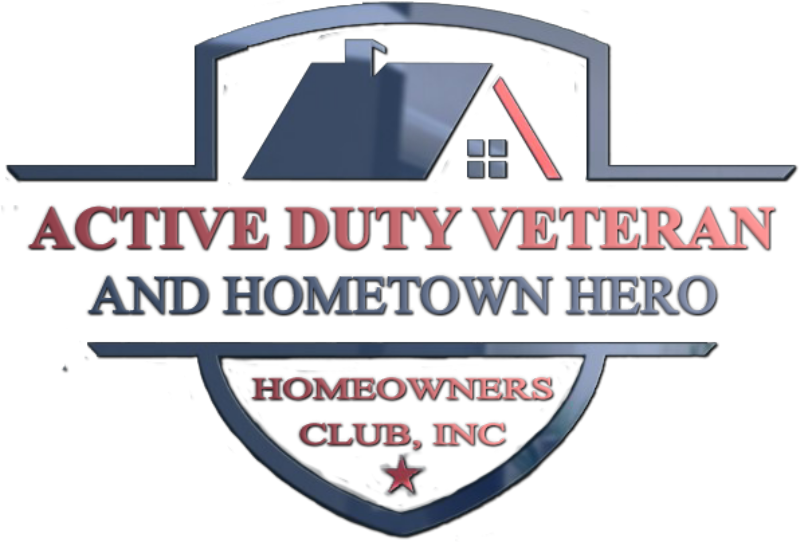Temecula, CA 92591 (951)
267-0016
veteransandhometownhero@gmail.com
501(c)3 EIN 84-3348125
Donate via Paypal
Job Preparation
Job Preparation Checklist
Your Documentation:
- Resume - Let's just get the obvious one out of the way. Set aside an hour or two to make some updates, edits, and tweaks, and get your resume where you want it. Remember, it's a brochure, not an autobiography. Efficient communication is valuable.
- Social Media - Yep, it's important. Update your LinkedIn and ask past coworkers for LinkedIn recommendations. In addition, check your social media profiles. You don't have to use them in the job search (though you can), but you should at least make sure there isn't anything embarrassing posted. Most companies don't actively track down your social media, but better to make sure you're putting your best foot forward.
- Portfolio - This is made up of examples of your body of work. For teachers, this is evidence of student achievement. For software engineers, this is Github. For web developers, this is web pages. For marketers, this is campaign and sales documentation. For academics, this is published papers. You get the idea; there's something for everyone. Struggling to find out what should go in your portfolio? Send me a message or comment below!
- References - If you're looking for a new job, your references should be the first to know, not the last. Make sure you reach out, get an updated phone number and email address, and find out the best way for hiring managers to initiate a reference request when the appropriate time comes. Should they first email, call, or text?
Your Perspective - Essential Questions to Ask Yourself:
- What don't you like about your current job? If you can't think of anything, why are you looking?
- What do you like about your current job? If you can't think of anything, why do you show up to work every morning? And/Or, why have you stayed this long in this position?
- What are the three most important characteristics you're looking for in your next job? If it's something logistical, like money or upward mobility, consider talking to your manager before you look outside of your current company. For all other characteristics, dig deep. "New challenges" means next to nothing to people who hear it all day (i.e. anyone who works in hiring). What kind of challenges? What are you hoping to learn in your next job? Why aren't you challenged in your current job?
Your Timeline - "Job Searching Is A Full Time Job":
- Screening Calls - Once you switch your LinkedIn profile to "Open to New Opportunities" and post your resumes to job boards, people are going to reach out. You might get a good bit of spam, so be prepared to field those emails and calls. Mixed in there will be recruiters and hiring managers who looked at your profile and might be able to help with your job search. So, decide on your strategy to handle the traffic and avoid "throwing out the baby with the bath water."
- Phone Interviews - Hiring managers are likely to have similar business hours as your current company. When are you going to have time to have time to step away to a private space for a 30-minute phone interview?
- Final Interviews - When will you have time for a 4-hour onsite final interview? Do you have flexible hours? Do you have paid time off?
- Start Date - The general standard across industries is 2 weeks. If that isn't the right fit for you, can you start right away? Do you have a project that you want to see through that ends in two months? What is your timeline?
#1: Establish your target field
It’s marketing 101 – you should go as niche as possible. Applying to a wide range of positions and then using the same résumé doesn’t work.
It’s marketing 101 – you should go as niche as possible. Applying to a wide range of positions and then using the same résumé doesn’t work.
#2: Research your target field
Find out everything you can about the kind of role, company, and industry you are targeting and use this information to position yourself effectively by communicating your unique value proposition that addresses the needs of your target.
#3: Create a written plan
If you don’t write things down, they don’t exist.
If you don’t want to forget anything, I recommend you create a written plan and stick to it. This will keep you organized and on track.
#4: Address any gaps
Determine where you have gaps in your experience, skills, knowledge, education, and other job requirements. Fill those gaps by taking courses, attending workshops/seminars, and/or volunteering in your target field.
#5: Create a branded résumé targeted for each job you apply to
I can’t stress this enough – you must have a résumé that delivers your unique value proposition and that is tailored for each position you apply for.
Don’t send the same document to multiple jobs, even if they are the same or similar. Each employer will have their own special requirements.
#6: Create a branded cover letter targeted to each job application
40% of hiring managers and recruiters expect a cover letter so it would be a great idea to create one. There are things you can address in a letter that you can’t in a résumé or Linkedin profile.
#7: Create a branded Linkedin profile
If used correctly, Linkedin is a great tool to help generate interviews. But before you start reaching out to recruiters, hiring managers, and HR, you must create a strong, branded profile.
There are various components of your Linkedin account that you need to optimize, giving special attention to the headline and 2000-character summary section.
#8: Assemble a portfolio of your work
if you’re in a creative industry, it would make sense to bring along samples of your work that you’re proud of and that would be relevant for your target field.
If you’re a bit tech savvy, you could also create a personal website that has a section to showcase your work.
#9: Create your brag book
Put together a list of all your key contributions and specific accomplishments that address the needs of your target field. This could be awards, accolades, surpassing targets – anything that demonstrates the kind of value you can bring to an organization.
Keep a record of your accomplishments in a computer folder and update the list as required.
#10: Create a professional email address
Set up a separate gmail address for your job search, that way it’s organized and emails don’t get lost with your other personal communication. Never use your current employer’s email address.
#11: Create a professional email signature
The email signature is how you sign off at the bottom of your email such as Sincerely, John Smith, Business Development Manager. Make sure the job title you use is relevant and appropriate for the position you are targeting.
If you have a side hustle and you’re calling yourself the President/CEO, DON’T USE IT unless you’re targeting a President/CEO type of role. You don’t want people to reject you because you have positioned yourself a certain way (over or under-qualified) that doesn’t match your target field’s requirements and expectations.
#12: Record a professional voice mail message
Keep your voice mail message clear, short, and highly professional. Do not insert any personal information into it that could be judged in a negative light.
Whatever phone number you publish, make sure that you are the only person answering it and not your 3-year old. It’s safer to stick with your personal cell phone and not a land line that everyone has access to.
#13: Reach out to 100+ hiring managers and network
You should contact as many hiring managers as possible to generate informational interviews, discuss potential openings with them, and to get referrals. This is an important part of active networking. The most efficient way to do this is through Linkedin.
It’s a numbers game – the more companies you contact, the more you increase you chances of landing a job sooner than later.
#14: Email 100+ people you know
Don’t forget to reach out to friends, family, acquaintances, former university/college classmates, people you know from social groups and networks.
The point here is to let them know you are looking for another opportunity and would appreciate it if they could spread the word and pass on your résumé (which you can attach).
The more people who know you’re looking, the better. Someone could know someone who’s looking for someone like you. I’ve known people who got jobs this way.
#15: Create 20 accomplishment stories
Employers want to know the kinds of results (positive outcomes/solutions) you produced which is your value and goes beyond what your duties and responsibilities were. There is a difference!
Brain storm 20 accomplishment stories that are relevant to your target field and write them down. You need to quantify your contributions as much as you can by using dollars ($), percentages (%) and numbers/volume (#). Limit the stories you write to a paragraph or two that you can deliver verbally in about 90 seconds.
#16: Assemble ideal job postings
Don’t focus on applying to jobs online because it doesn’t deliver great results but if you’re going to do this, you might as well apply to as many as you can.
Keep track of applications on an Excel spreadsheet as not to duplicate efforts and stay organized so you can follow up.
#17: Research answers to the most common and dreaded interview questions
You can google interview questions and answers. There are literally hundreds of them with the most common ones being:
Tell me about yourself, Why should we hire you? Why are you leaving your current position? What is your biggest weakness/strength? Why are you interested in this position? How much money are you looking for? What do you know about this company?
#18: Create your elevator pitches
Create a short, medium, and long elevator pitch. This is your value summary a.k.a. unique value proposition or unique sales proposition. Your UVP is how YOU can solve whatever challenges the employer wants addressed.
Elevator pitches can be used for different applications such as your résumé, cover letter, Linkedin, personal website, and when you meet someone for the first time who asks you “So, what do you do for a living?”
#19: Create business cards
Just because you don’t have your own “business” doesn’t mean you shouldn’t have business cards. You can hand them out to people you meet through professional networking events, socially, or standing in line at the grocery store. You never know who you’ll bump into, so it’s a good idea to be prepared.
#20: Create networking email templates
Yes, you should be networking online (Linkedin) and even offline if it’s appropriate for you.
For Linkedin, you need to create different kinds of emails such as invitation requests, follow-up emails to new connections, and emails to existing
connections. Since you’re saying pretty much the same thing to people, you can cut and paste the template and modify them accordingly.
#21: Set up a separate computer folder for each company you reach out to
Place the job posting and accompanying résumé and cover letter in a folder that’s labelled the name of the employer. It’s better if everything’s in one place.
#22: Create a spreadsheet to track your job applications and follow-up
If you’re networking, applying to jobs, and sending your résumé and cover letter anywhere you need to keep track of this activity to avoid duplicating efforts like contacting the same people more than once (which will be annoying for them).
#23: Create a spreadsheet to track your networking and follow-up
Probably best to keep networking and informational meetings separate from actual job postings and applications.
#24: Use an online calendar to track meetings
Use a google, Outlook, or some other calendar to organize your appointments so they’re available at a glance and you don’t miss anything.
#25: Determine and acquire suitable interview attire
Make sure you have appropriate interview attire that’s been cleaned and pressed at least the day before so you’re not scrambling at the last minute.
#26: Have your job references ready
While you should never put your references on your résumé or in the cover letter, you should have them typed up and standing by before you start your job search.
#27: Conduct salary research
Salary negotiation is always the most stressful part of the interview process. Some employers or recruiters will ask you what you’re “looking for” during the initial phone interview.
You should research salary levels in your target field on various sites such as indeed, Ladders, Glassdoor, and Linkedin.
Another way is to talk to actual hiring managers who would be willing to give you that information. This will help you determine what your minimum acceptable salary range is.
#28: Clean up all of your social media
The first thing the employer will do is google you to see what they can dig up in photos or posts about you that could be considered a “red flag”. You’ll need to to eliminate anything that could be construed as negative from all of your social media profiles (Facebook, Linkedin, Twitter, etc.)
#29: Prepare your questions for interviews
You should prepare about 12 questions to ask the employer about the company and position. You won’t be able to answer them all, but you need more than enough in the event the employer addresses many of them during the meeting. You don’t want to be in the situation where they ask you “So, what questions do you have for me?” and you can’t come up with any.
#30: Prepare your questions for informational meetings
Even if you are applying to jobs online, you should still generate informational meetings with hiring managers in your target field as part of your career research and networking efforts.
An informational meeting is NOT an interview and it is being grated as a favour, so keep it to 20 to 30 minutes max. You should prepare about 10 questions to ask the hiring managers but you might be able to ask only about 5 or 6.
#31: Determine what you’ll do when presented with a counter-offer
Nothing can screw up your job search (and possibly your career trajectory) more than not knowing how to address a counter-offer.
#32: Develop and maintain a great attitude!
If you lost your job recently or have been looking for a while, it can get pretty frustrating (and that would be an under-statement!) so it’s important to keep a positive mind-set. The people who are the most positive, persistent, professional, and proactive are the ones who land the jobs.


